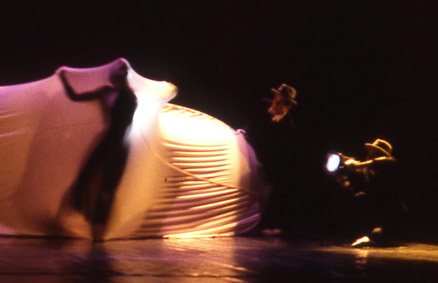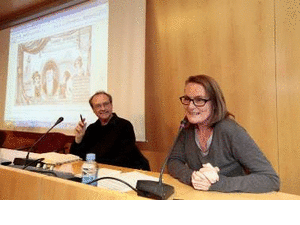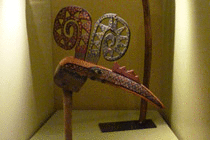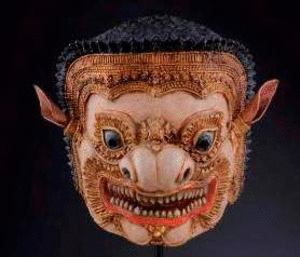We open the section on Training and Development with this article by Mauricio Kartun, which appeared in the magazine Móin-Móin. Mauricio Kartun is one of the principle points of reference of the “new dramaturgy” that has developed in Argentina over recent decades. Besides his work as author and director, he also teaches on the Advanced Course for Puppeteers (Curso Superior de Titiriteros) at the National University of General San Martín. Our thanks to the magazine Móin-Móin, of Jaraguá do Sul, Brasil, to its directors Gilmar A. Moretti and Valmor Nini Beltrame, as well as to Mauricio Kartun himself, for permission to translate and publish the text. It is the perfect text with which to open this section which we hope will be useful, illustrative, open to all approaches and, above all, full of life and energy.
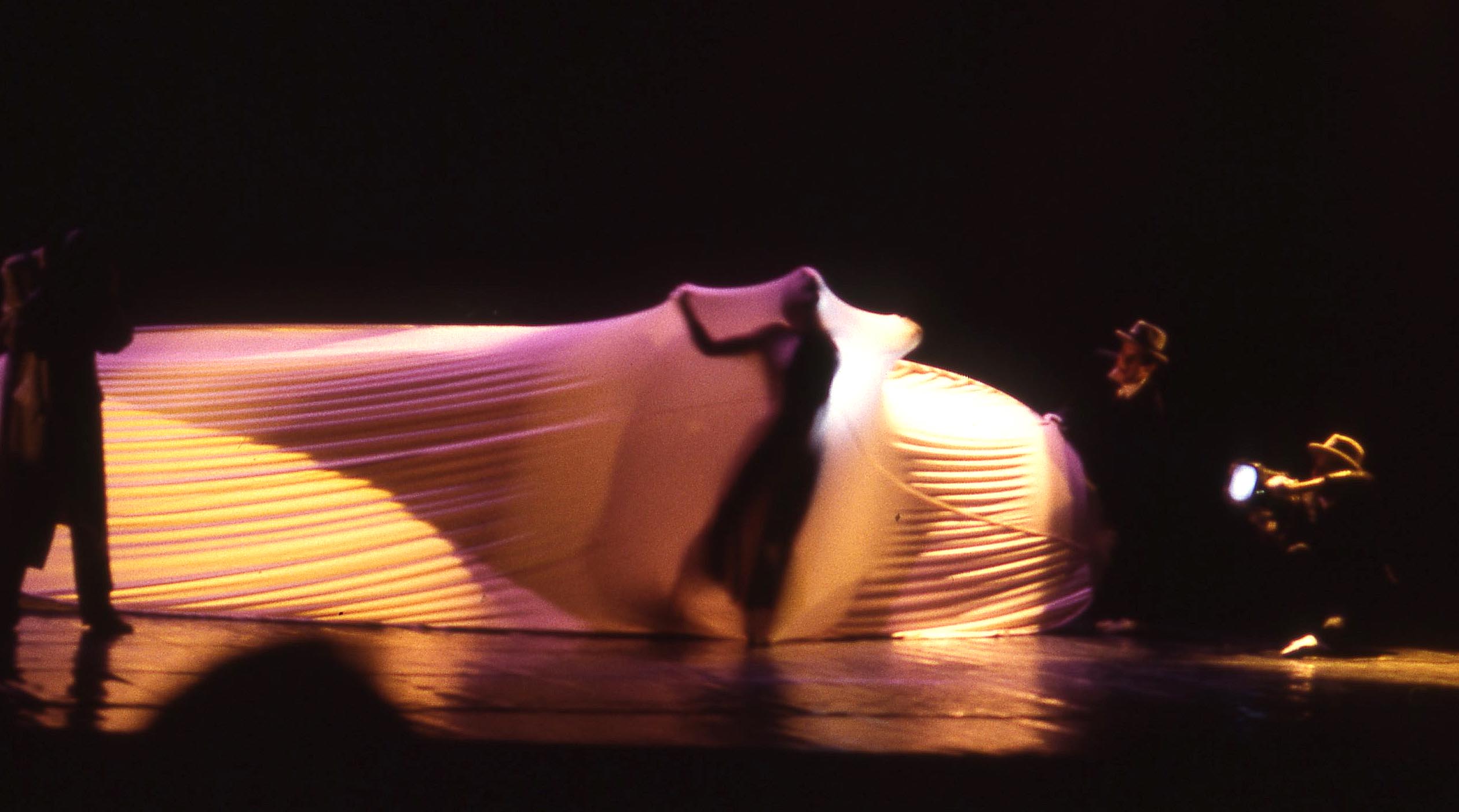
Philippe Genty. Photo by Jesús M. Atienza.
I. Puppets: The word which acts
I first met Ariel Bufano just months before his death. Less than a year. A very short time. Less than is usually necessary for the peculiarities of a person whom one has recently met to dissolve in the whole, that mass, which a long relationship implies. Perhaps that is why some of his words and images, some of his examples, a couple of the exercises I learned from him, have assumed for me a meaning with a strange – an extremely high – degree of concentration. So few months didn’t give me time to humanise him. I didn’t have time to discover reiterations, I didn’t catch any contradiction. I didn’t see the mechanisms. These concepts, then, remained in my mind with the clarity and illuminating power of mythical things. And with their unique, inimitable character. I can tell you a number of things he said to me, that I saw, but it is unlikely they will make their mark on you in the same place as on me.
We were thinking – at that time – of doing a version of La rosa de papel (The Paper Rose) by Valle-Inclán. We were going to work on the dramaturgy together and he, of course, would direct it. My relationship with puppets had begun only recently: I pounded through the books that Ariel lent me: Jurkowsky, Meschke. But I couldn’t shake off – even so – a stereotyped image: the puppet show as a limited – and limiting – version of actors theatre. I never managed to feel passionate about the idea of writing for these creatures with whom one couldn’t even go out for a meal after the show. One December afternoon in the bar Azul, he explained the image he had been kneading into shape for the end of the piece: that apocalyptic scene, that extraordinary fire which – in the impossibility of staging it – I had imagined would be resolved by one of a number of conventional effects. “I’m going to burn the puppets” he said. “We’ll have to whisk off the real puppets and introduce simpler ones which I’ll sacrifice in each performance.” I returned home filled with inexplicable disquiet. I went to the text:
“Tripping again on her way to the dead woman. A small candle falls, and between the ivory hands the paper rose burns like a rose of fire. The clothes burn, the coffin burns. Simeón Julepe, amidst the flames, his arms round the corpse, shouts frenetically. The women fall back, waving their arms. The whole forge gleams with fire.”(1) And I understood.
So it was shortly after this that I began to teach dramaturgy in the PuppetSchool of the GeneralSanMartinTheatre. To tell the truth, for a long time now I teach things in order to learn about them. From my failures at school as a youngster, being made to repeat academic years, I always made the most, whenever I could, of the fact that when you love what you study, you learn, and when, on the other hand, it is an obligation, the most that can be hoped for is to pass exams. Few things excite my passion for knowledge more than having to teach them. Few help clarify something more than having to make it clear for someone else. And so I make a more or less rational use of this energy: I invent new courses, seminars, which expand a little the field of original application: scripts, group creative work, creativity, dramaturgy for actors.
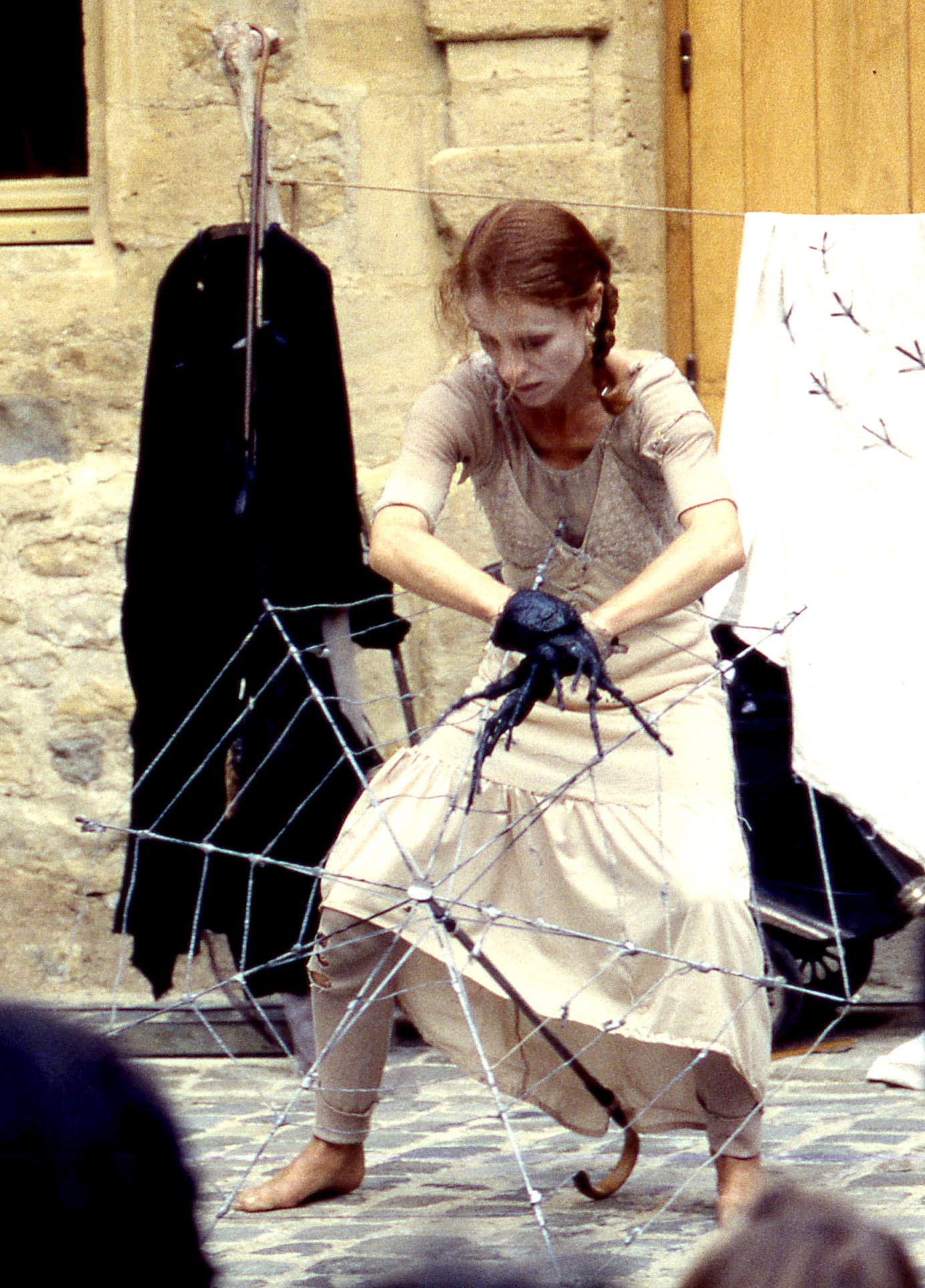
Theater Meschugge. Photo by Jesús M. Atienza.
From all disciplines I draw new elements which I recycle, in turn, in each of the others. But, in the course of this alchemical search, from none of them have I drawn so much as from the dramaturgy of puppet theatre and, more specifically, from that of object theatre. Poetry as a phenomenon is so clearly perceived from this perspective that at times I am gripped by a superstitious fear of having finally gained a degree of truth. One only needs to see these objects taken out of context become radiant with meaning (significado), any conceptual framework about their specific reality destroyed. Objects that are resignified to the limit. Which are expressed with the most revealing of metaphors. The most surprising of images. With the cleanest of synecdoches. Objects that are animated – possesing an anima: soul – by the poet-manipulator. By his or her way of seeing. I’m thinking of Periférico with his sinister dolls, his burial grounds; of Genty with his mysterious bits of luggage, his nooses, his pieces of cloth. The discourse becomes so fluid that it seems as though there is no friction at all between the means of emission and the very mind of the receiver. The objects have such a strong poetic entity, that it seems reasonable to think, like Marcel Duchamp, that “The very choice of an object is equivalent to a creative act”. To go no further – I would like to comment on some of my pupils’ exercises.
A banana seduces two tomatoes with its most lascivious striptease. Tomatoes in a sorry state. Down at heel. Any man could identify with them. They fight over the woman. The old, 60’s liquifier in which they sit, transforms them before my horrified gaze into a bloody purée. Duilia’s howl merges with that of Los Redondos. Criminal Mambo.
A roll of lavatory paper unfurls its life before our eyes, monologuing continuously, one turn after another. At its side, its twin does its best. But there’s nothing to be done. It has absorbed the dirty, familiar, family water, and can no longer escape from itself. A uniform mass. It becomes stuck, impotent, halfway. The other, in melancholy mode, gets to the end of the cardboard tube which rolls away, a corpse.
A woman sitting on the edge of the bed watches her husband who is asleep. She looks at her blood-covered heart, beating in her hand. She calls up her most secret fantasy: that friend of her father’s touching her on the backseat of the Chevrolet. Her potent desire and its repression. She puts the heart carefully on a plate. With a kitchen knife she divides it up, urgently; passion made flesh; she puts the plate on the floor: “Squelch… squelch…”.
Stories which with traditional dramaturgy would require an ocean of words, – mostly informative -, concentrated in a minimal handling of objects. I understand Paul Claudel at last: “A puppet is not an actor that talks, it is a word that acts”.
Translated from Spanish by Rebecca Simpson.
Notes:
(1) Valle-Inclán, Ramón del. Retablo de la Avaricia, la Lujuria y la Muerte. Ligazón, La Rosa de Papel, El Embrujado, La Cabeza del Bautista, Sacrilegio. Colección Austral, Espasa-Calpe, S.A., Madrid 1996.
(2) Kleist, Heinrich von. Sobre o teatro de marionetes. Rio de Janeiro: Sette Letras, 1997.

